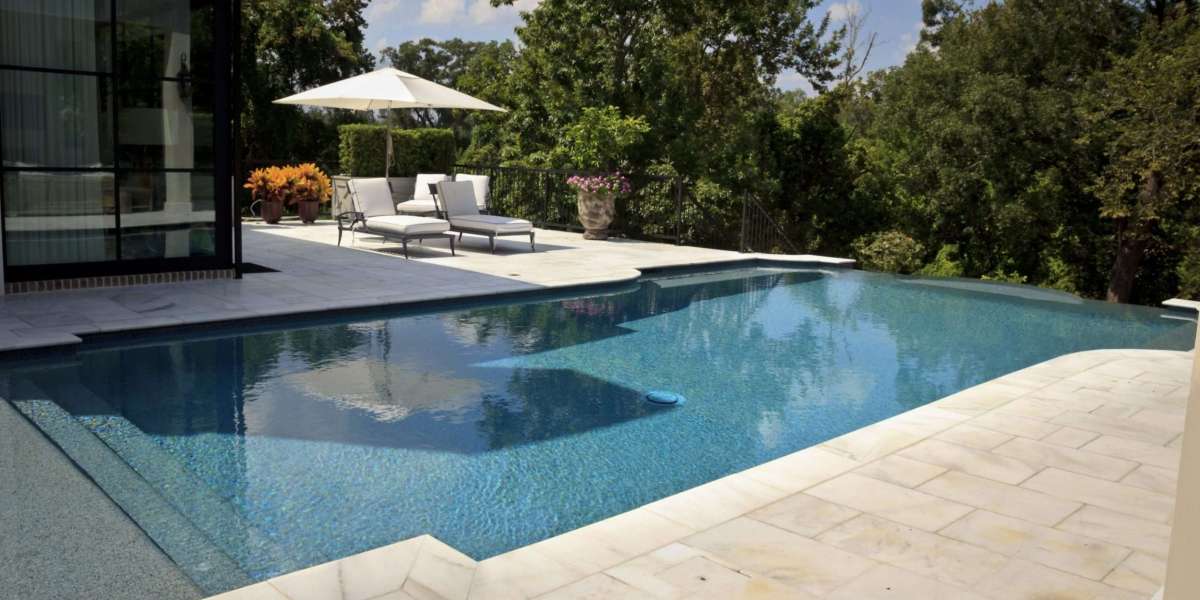A swimming pool is more than just a place to cool off; it’s an extension of your living space, a centerpiece for outdoor entertainment, and a personal retreat. The finish you choose for your pool's interior is crucial, as it affects not only the aesthetic appeal but also the durability and maintenance requirements of your pool. Among the various options available, pool pebble finishes have gained popularity for their natural look, resilience, and low maintenance. In this article, we'll delve deep into what a pool pebble finish is, its benefits, installation process, types, and tips for maintaining its beauty.
Understanding Pool Pebble Finishes
A pool pebble finish is a type of interior surface for swimming pools made from small, smooth pebbles embedded in a mixture of cement and other additives. These pebbles are often sourced from natural riverbeds and come in a variety of colors, allowing for customization that can complement the overall design of your outdoor space. The pebbles create a textured surface that is not only visually appealing but also provides a non-slip, durable finish.
The use of pebble finishes in pools began as a trend in high-end luxury pools, but their benefits have made them increasingly popular among homeowners with all types of pools. The finish can be applied to both new and existing pools, making it a versatile choice for those looking to upgrade their pool’s appearance.
The Benefits of Choosing a Pool Pebble Finish
1. Aesthetic Appeal: One of the most significant advantages of a pool pebble finish is its natural, earthy appearance. The small pebbles create a textured, mosaic-like surface that can enhance the visual appeal of your pool. Depending on the color and type of pebbles used, you can achieve a wide range of looks, from a deep lagoon effect to a bright, beach-like appearance. The natural colors of the pebbles also tend to blend well with the surrounding landscape, making your pool look like an organic part of your outdoor environment.
2. Durability: Pebble finishes are known for their durability. Unlike plaster finishes, which can chip, crack, or stain over time, pebble finishes are more resistant to these issues. The pebbles themselves are naturally strong, and when embedded in the cement, they create a tough, resilient surface that can withstand the harsh conditions of being submerged in water. This makes pebble finishes an excellent choice for pools in areas with extreme weather conditions or for pools that are heavily used.
3. Low Maintenance: Maintaining a pool can be a time-consuming task, but a pebble finish can make it easier. The non-porous nature of the pebbles means that algae and other contaminants have a harder time taking hold on the surface, reducing the need for frequent cleaning. Additionally, the textured surface can hide minor dirt and imperfections, so your pool will look cleaner for longer. With proper care, a pool pebble finish can last for many years with minimal upkeep.
4. Slip-Resistant Surface: Safety is always a concern with swimming pools, especially when it comes to preventing slips and falls. The rough texture of a pebble finish provides a slip-resistant surface, which can be particularly beneficial for families with children or elderly members. This added safety feature does not compromise the comfort of the surface, as the pebbles are smooth to the touch.
5. Customization Options: Pool pebble finishes offer a high degree of customization. You can choose from a variety of pebble sizes, colors, and even blend different types of pebbles to create a unique look. Some homeowners opt for a mix of pebble and glass beads, which can add a sparkling effect to the pool's surface, especially when the sun hits the water. This level of customization allows you to design a pool that truly reflects your personal style and complements your outdoor living space.
The Installation Process of Pool Pebble Finishes
Installing a pool pebble finish is a specialized process that should be performed by experienced professionals to ensure a smooth and durable result. Here’s an overview of what the process entails:
1. Surface Preparation: The first step in installing a pool pebble finish is preparing the pool’s surface. This involves draining the pool and thoroughly cleaning the interior to remove any debris, old paint, or plaster. Any cracks or imperfections in the pool's structure are repaired at this stage to ensure a smooth and even surface for the pebble application.
2. Application of Bond Coat: Once the surface is prepared, a bond coat is applied. This coat acts as an adhesive layer that helps the pebble mixture adhere to the pool’s surface. The bond coat is crucial for ensuring that the pebble finish remains securely in place for many years.
3. Pebble Application: After the bond coat has dried, the pebble mixture is applied to the pool’s interior. This mixture consists of the chosen pebbles, cement, and other additives that enhance the durability and appearance of the finish. The mixture is carefully troweled onto the surface, ensuring even coverage and the desired thickness.
4. Exposure Process: Once the pebble mixture is applied, the surface is carefully washed to expose the pebbles. This is done by spraying the surface with water and using a brush to remove the thin layer of cement covering the pebbles. The exposure process can be adjusted to reveal more or less of the pebbles, depending on the desired texture and appearance.
5. Curing: After the exposure process is complete, the surface is allowed to cure. Curing is essential for the strength and longevity of the finish. During this time, the pool should remain empty and covered to protect the surface from debris and the elements. The curing process typically takes several days to a week, depending on the weather conditions.
6. Filling the Pool: Once the finish has cured, the pool is refilled with water. It’s important to monitor the water chemistry closely during the initial fill to ensure that it remains balanced, as this will help preserve the finish. After the pool is filled, it’s ready for use.
Types of Pool Pebble Finishes
There are several types of pool pebble finishes to choose from, each offering a unique look and feel. Some of the most popular options include:
1. Standard Pebble Finish: This is the most common type of pebble finish and consists of natural pebbles in a variety of colors. The pebbles are smooth and rounded, creating a comfortable yet textured surface. Standard pebble finishes are durable and provide a natural, earthy appearance.
2. Mini Pebble Finish: As the name suggests, a mini pebble finish uses smaller pebbles than the standard option. The smaller pebbles create a smoother surface, which some people find more comfortable underfoot. Mini pebble finishes also offer a slightly more refined look while maintaining the durability and natural beauty of larger pebbles.
3. Polished Pebble Finish: For those seeking a more luxurious look, polished pebble finishes are an excellent choice. The pebbles used in this finish are polished to create a smooth, shiny surface that glistens under the water. Polished pebble finishes are often more expensive but offer a sophisticated, high-end appearance.
4. Blended Pebble Finish: A blended pebble finish combines different sizes and colors of pebbles to create a custom look. This type of finish allows for endless design possibilities, as you can mix and match pebbles to achieve the exact color scheme and texture you desire. Blended pebble finishes are ideal for those who want a truly unique pool interior.
Maintaining Your Pool Pebble Finish
While pool pebble finishes are relatively low maintenance, there are some steps you can take to keep your pool looking its best for years to come:
1. Regular Cleaning: Although pebble finishes are resistant to algae and staining, it’s still important to clean your pool regularly. Brushing the pool walls and floor with a pool brush will help prevent the buildup of dirt and debris. Vacuuming the pool regularly will also keep the surface clean and free of leaves and other organic matter.
2. Water Chemistry: Maintaining proper water chemistry is crucial for the longevity of your pool pebble finish. Imbalanced water can lead to scaling, etching, or discoloration of the surface. Regularly test the water and adjust the pH, alkalinity, and calcium levels as needed to keep the water in balance.
3. Addressing Stains: If you notice any stains on your pebble finish, address them promptly to prevent them from becoming permanent. Most stains can be removed with a gentle acid wash or a specialized pool cleaner. Be sure to follow the manufacturer's recommendations to avoid damaging the surface.
4. Periodic Sealing: Some pebble finishes may benefit from periodic sealing to protect the surface and enhance the color of the pebbles. Consult with your pool professional to determine if sealing is necessary for your specific finish and follow their advice on how often to apply it.
Conclusion
A pool pebble finish offers a winning combination of beauty, durability, and low maintenance, making it an excellent choice for pool owners looking to enhance their outdoor oasis. With a variety of customization options and a resilient surface that can stand the test of time, a pebble finish can transform your pool into a stunning and functional centerpiece of your backyard. By understanding the installation process and following proper maintenance practices, you can enjoy the benefits of your pool pebble finish for many years to come. Whether you're building a new pool or renovating an existing one, a pebble finish is a worthwhile investment that will elevate the look and feel of your swimming experience.






